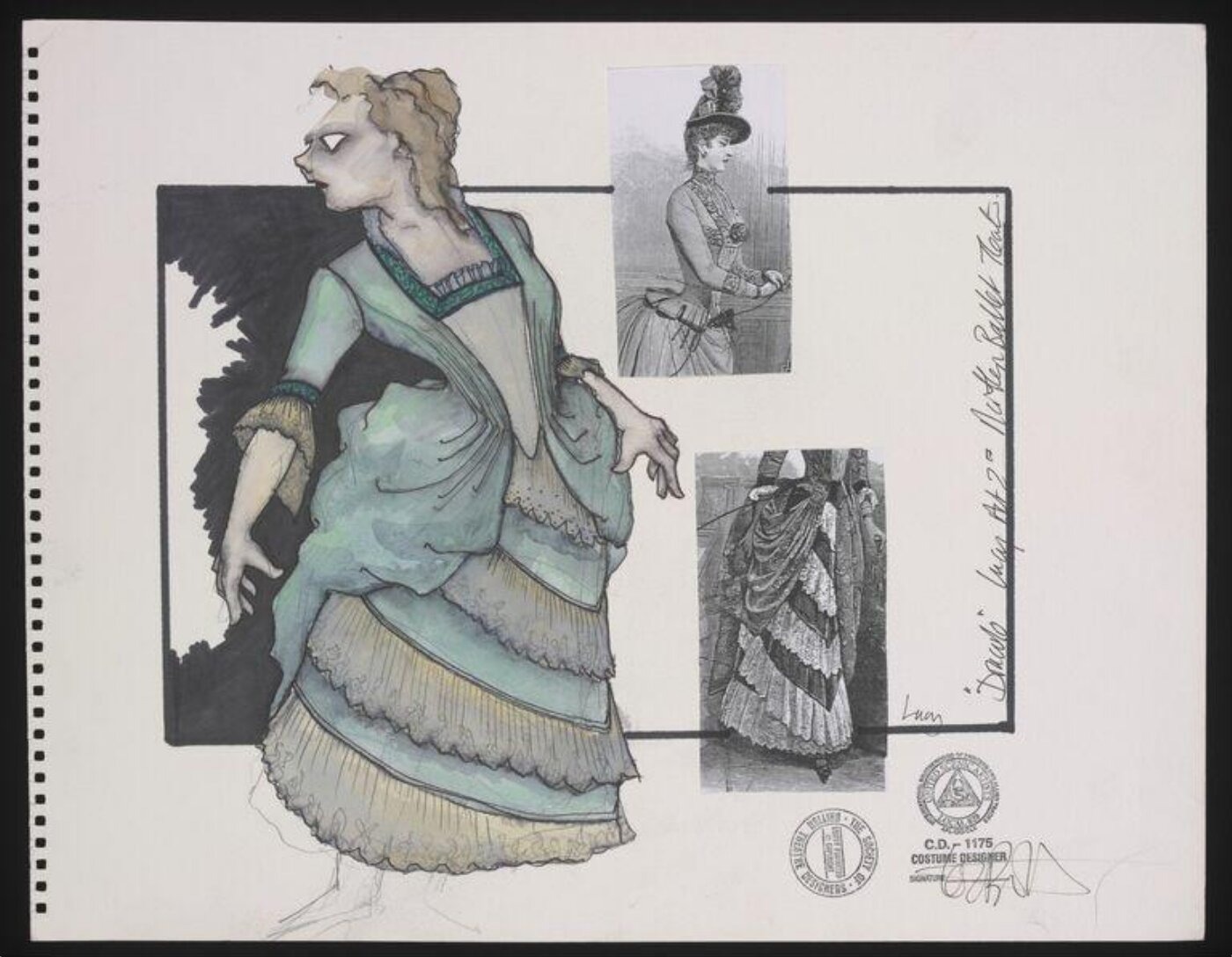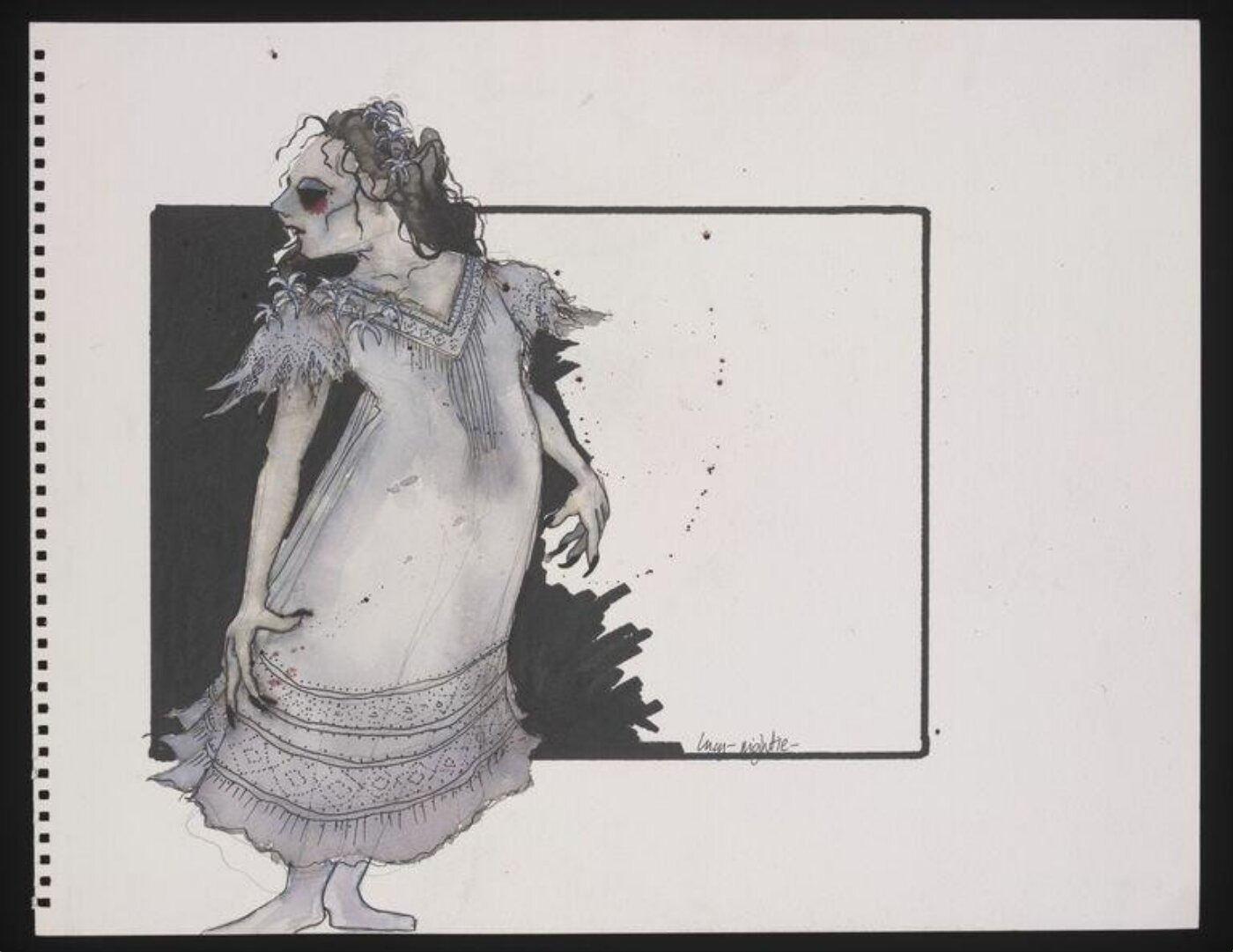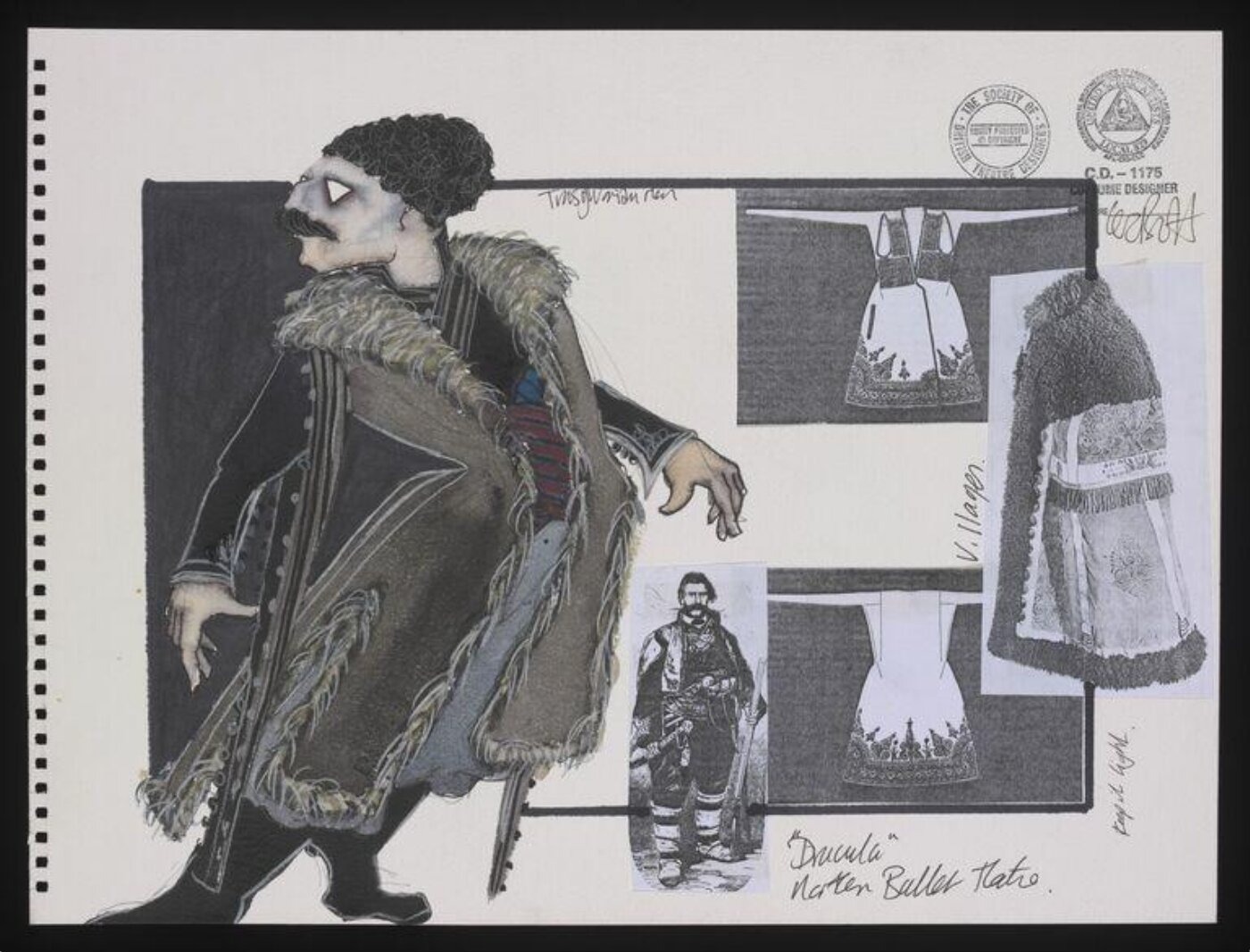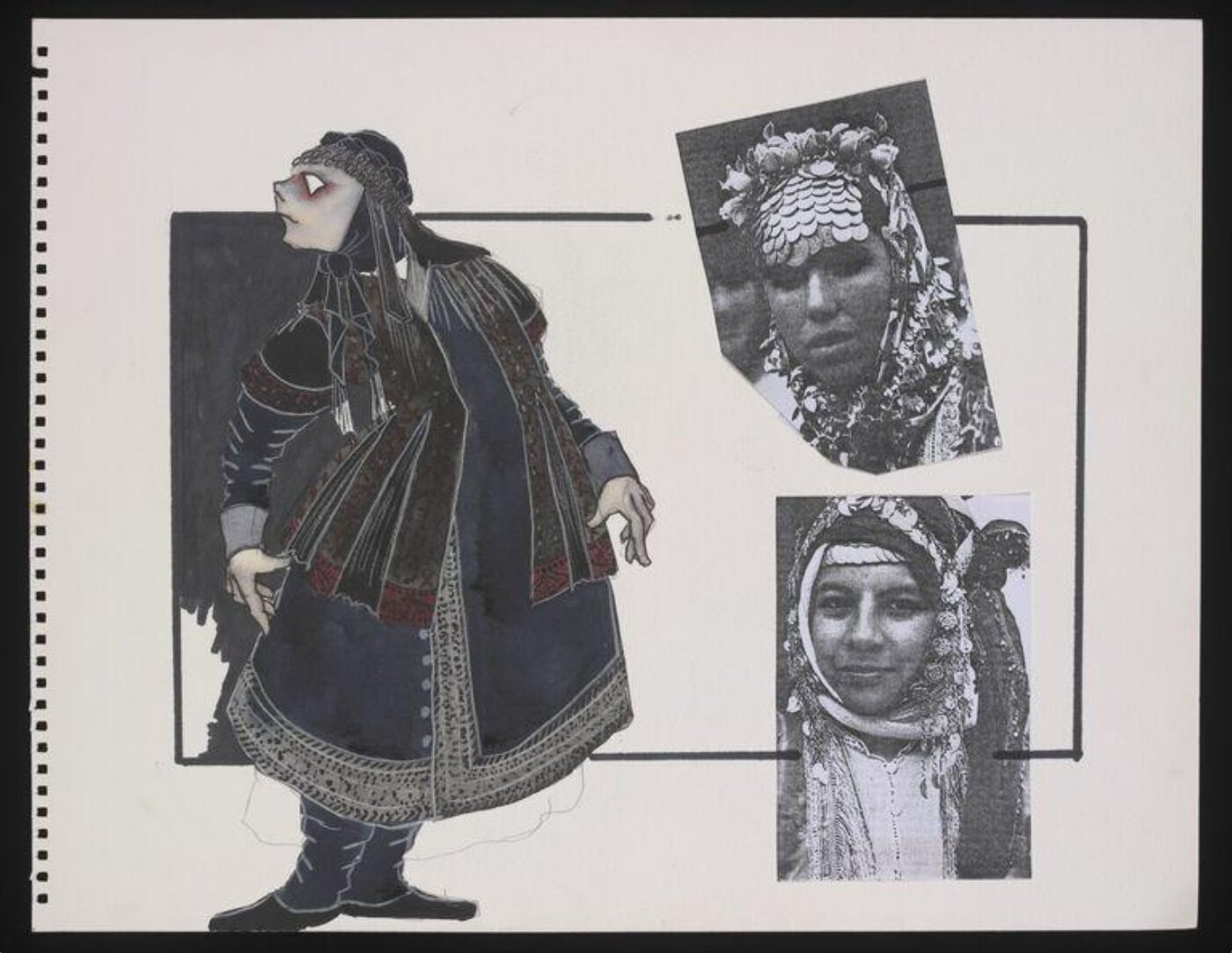
In Colorado Ballet’s basement, sewing machines, racks of clothing, and baskets of shoes fill the space. In one section, costumes are neatly labeled for the Nutcracker. In another, a rainbow of tutus line the wall.
Above her studio, music seeps through the floor and leaps and bounds thump overhead.
This is where costume designer Shirin Lankarani works her magic.

Before Lankarani joined the Colorado Ballet, she worked on film sets in Iran.
“In my country,” she said, “I was movie director, assistant director, and I designed for movie.”
Now, she brings her skill to the stage. And her favorite show of them all is “Dracula,” which returns to the Ellie Caulkins Opera House in Denver from Oct. 3 through 12.

The ballet is based on Bram Stoker’s Gothic novel. But another text is also integral to the production – Lez Brotherston’s costume bible.
There are many different renditions of “Dracula.” The version Colorado Ballet performs originated in 1996 with the Northern Ballet Theatre Company in Leeds, England. It was choreographed by Michael Pink, with an original score by Philip Feeney.
When Colorado Ballet purchased the rights to the show, it also acquired the original sets and costumes from British designer Lez Brotherston, with the agreement that the designs wouldn’t be modified.
“As agreement, we cannot change it so much,” Lankarani said. That means no alterations to costume colors or styles, and no bold new looks.
But that doesn’t mean there’s little work to be done.

“Most of them, little bit, I changed them. Put them new material, because they before was all silk and ripped so fast,” she said, holding up a tired costume next to a repaired version.
She said all the moving and lifting of dancers is hard on older fabrics, like silk, which was used in many of Brotherston’s designs. When she replaces those parts, she uses newer, more flexible materials.
“We repair them and we put together,” Lankarani said, pointing to stitching on a vampire’s dress.
All of Brotherston’s designs were inspired by historical research, including the designs for the Transylvanian villagers.
Transylvania, which translates to "the land beyond the forest," is a historical region in central Romania where Stoker’s infamous vampire tale is set.
“This one come from Romania,” Lankarani said, holding up a villager costume and pointing to a colorful fabric used in the design. “That's the costume there, material came from (Romania).”

The making of a cult classic
Every time the Colorado Ballet stages “Dracula,” fans go wild.
They show up in fangs and capes. They don elegant Gothic attire. And they buy tickets – lots and lots of tickets.
"The level of passion our patrons show each time we bring Dracula back to Denver is incredible,” Artistic Director Gil Boggs said in a statement. “The last time we presented this production in 2022, performances sold out before we even opened, and we're looking forward to another sold-out run this season.”
But it’s not only the fans who love the show. It’s the dancers and the crew, too.

Lankarani said it’s her favorite, costume-wise, of all the Colorado Ballet productions.
And leading up to opening night on Oct. 3, she and her team get to do one of the most fun parts – adding the blood.
“All of this go bloody,” Lankarani said, “very blood, all over the costume.”
See “Dracula” by the Colorado Ballet at the Ellie Caulkins Opera House in Denver from Oct. 3 through Oct. 12.















